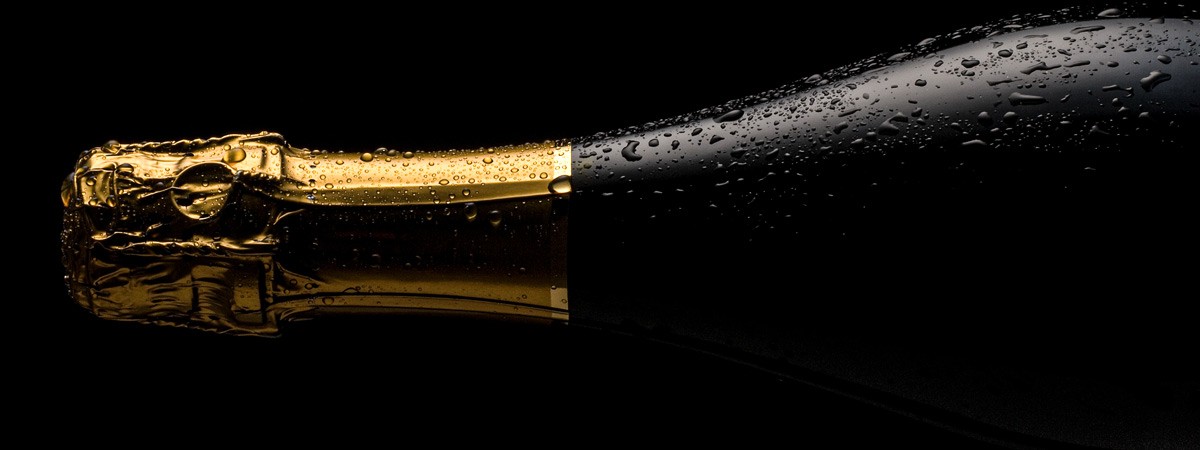A warm summer evening with a chilled bottle of sparkling wine. When the cork is twisted, it goes shooting to the sky. The pressure behind the cork is enormous – so how can a bottle made of glass, known for being fragile, withstand the pressure? Vacuum pumps from Busch make sure every bottle has the exact thickness of glass it needs.
Some products seem desperate to get out of their packaging. Think of sparkling drinks, both alcoholic and non-alcoholic, and aerosol cans. The reason: Before opening, the product is in a comfortable state of equilibrium. But as soon as it comes into contact with ambient air, the product – and its bubbles – expand. This poses a challenge for packaging. This thin layer of aluminum, glass, or plastic is all that stands between the product and its escape, so it has to be up to this challenge. To give glass bottles the strength and uniformity they need not to crack under pressure, vacuum pumps provide a vital part of the process.
Blown into shape
Glass is famously delicate; we have all suffered from a mishandled bottle of ketchup or wine that has ended in fragments all over the kitchen floor and a messy clean-up operation. But made in the right way, glass can be a surprisingly sturdy material that can put up with a lot. Traditionally, glass is made by blowing, with the air coming from human lungs. While today’s factories mean that workers can breathe more easily, the idea is still the same – just that the air is now compressed and pumped by machine. Melted glass is dropped into a mold, where compressed air blows it into the correct shape. However, this method alone can create a bottle that is uneven on the inside, resulting in some parts of its walls being thicker than the others. This doesn’t pose any problems for a bottle of still white or red wine, but for something sparkling, the thinner points of the bottle can become weaknesses to exploit.
Strength from vacuum
Bringing vacuum into the process is a way of creating a bottle that is more structurally sound. Generally, both compressor and vacuum pump are used in combination: The mold is still filled with compressed air, but vacuum pumps additionally provide suction. The mold is sealed and vacuum applied from all sides. This combination means that the molten glass is then both pushed and pulled into the mold simultaneously, speeding up the process and ensuring optimum distribution of the molten glass. It also improves the finish of the external surface. The better distribution helps eliminate the unevenness that would be created by a system that uses only compressed air and creates a bottle with uniform thickness and fewer weak spots. This in turn gives the bottle the structural stability needed for its potentially explosive contents. Busch offers vacuum pumps that will provide the suction needed to keep the bubbles firmly inside the bottle.

Bottling up the Pressure
Strong walls to hold back the bubbles
Why do fizzy drinks overflow if you shake the bottle?
Unshaken, a carbonated drink in a bottle is in perfect balance. The carbon dioxide dissolved in the liquid is under the correct pressure to keep it safely contained until the bottle is opened. But to keep it at that pressure, there is also some gas floating at the top of the bottle in the space between liquid and lid. If you shake your bottle of soda, some of this gas will form small bubbles in the liquid – many completely invisible to the naked eye. The more bubbles, the easier the journey out for the fizz when the bottle is opened. Smaller bubbles will combine, reducing the amount of time needed for bubbles to form and creating a surge that will cause your drink to spill over – and go flat much faster. There are different theories on the best way to stop your drink becoming a frothy mess, ranging from tapping the top or side of the bottle with your finger to hitting the base of the bottle firmly on the table before opening. But the most foolproof solution is also the simplest: If you suspect your drink has been shaken too much, your best bet is to simply leave it alone for a while. Over time, the newly introduced bubbles will work their way back up to the top and you can be sure of just a pop, rather than a flood, when you break the seal.
Unshaken, a carbonated drink in a bottle is in perfect balance. The carbon dioxide dissolved in the liquid is under the correct pressure to keep it safely contained until the bottle is opened. But to keep it at that pressure, there is also some gas floating at the top of the bottle in the space between liquid and lid. If you shake your bottle of soda, some of this gas will form small bubbles in the liquid – many completely invisible to the naked eye. The more bubbles, the easier the journey out for the fizz when the bottle is opened. Smaller bubbles will combine, reducing the amount of time needed for bubbles to form and creating a surge that will cause your drink to spill over – and go flat much faster. There are different theories on the best way to stop your drink becoming a frothy mess, ranging from tapping the top or side of the bottle with your finger to hitting the base of the bottle firmly on the table before opening. But the most foolproof solution is also the simplest: If you suspect your drink has been shaken too much, your best bet is to simply leave it alone for a while. Over time, the newly introduced bubbles will work their way back up to the top and you can be sure of just a pop, rather than a flood, when you break the seal.